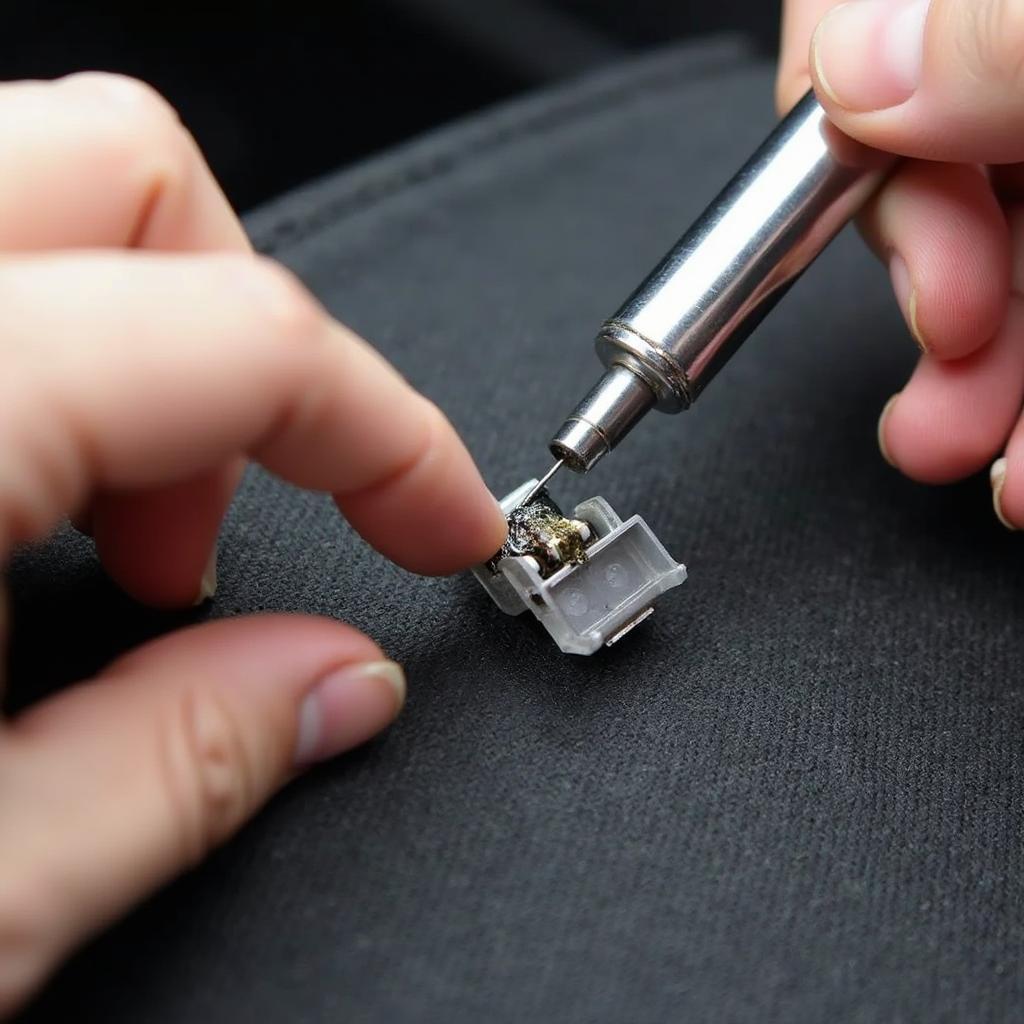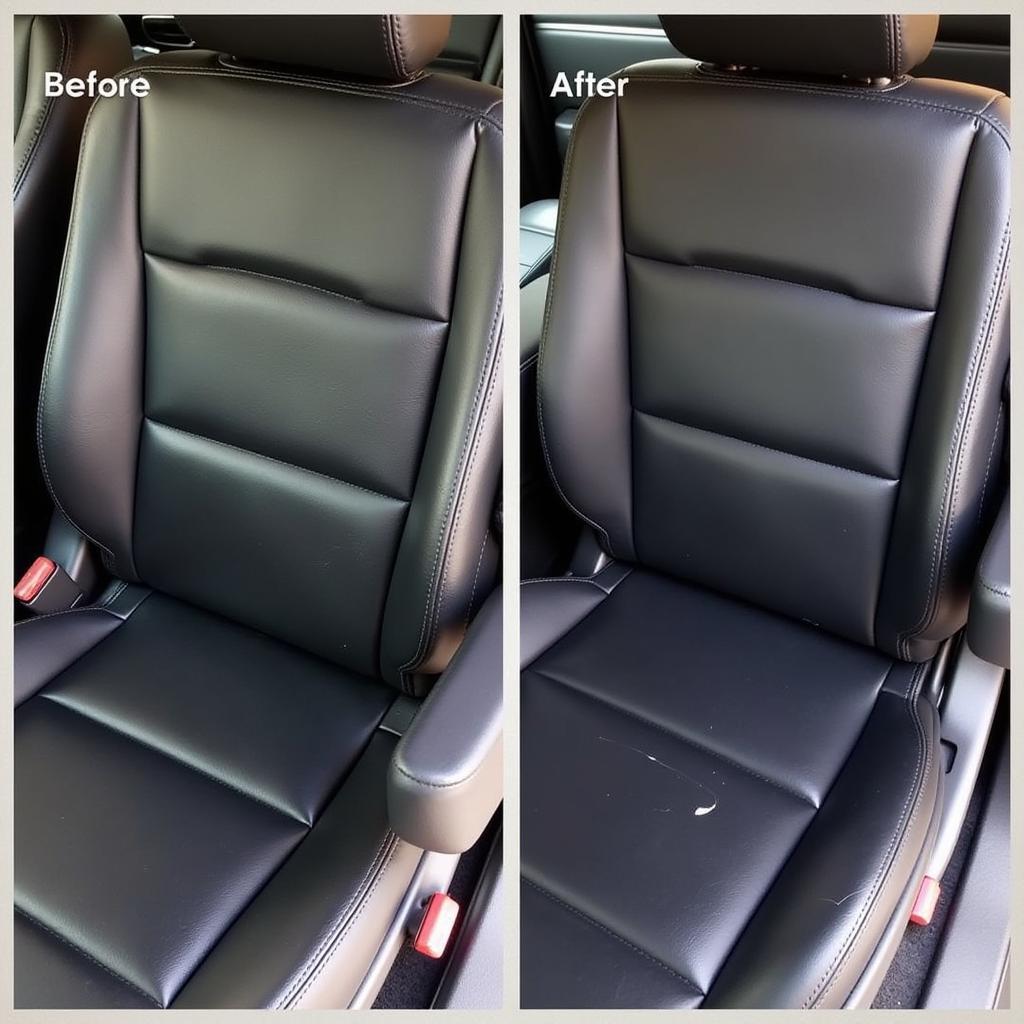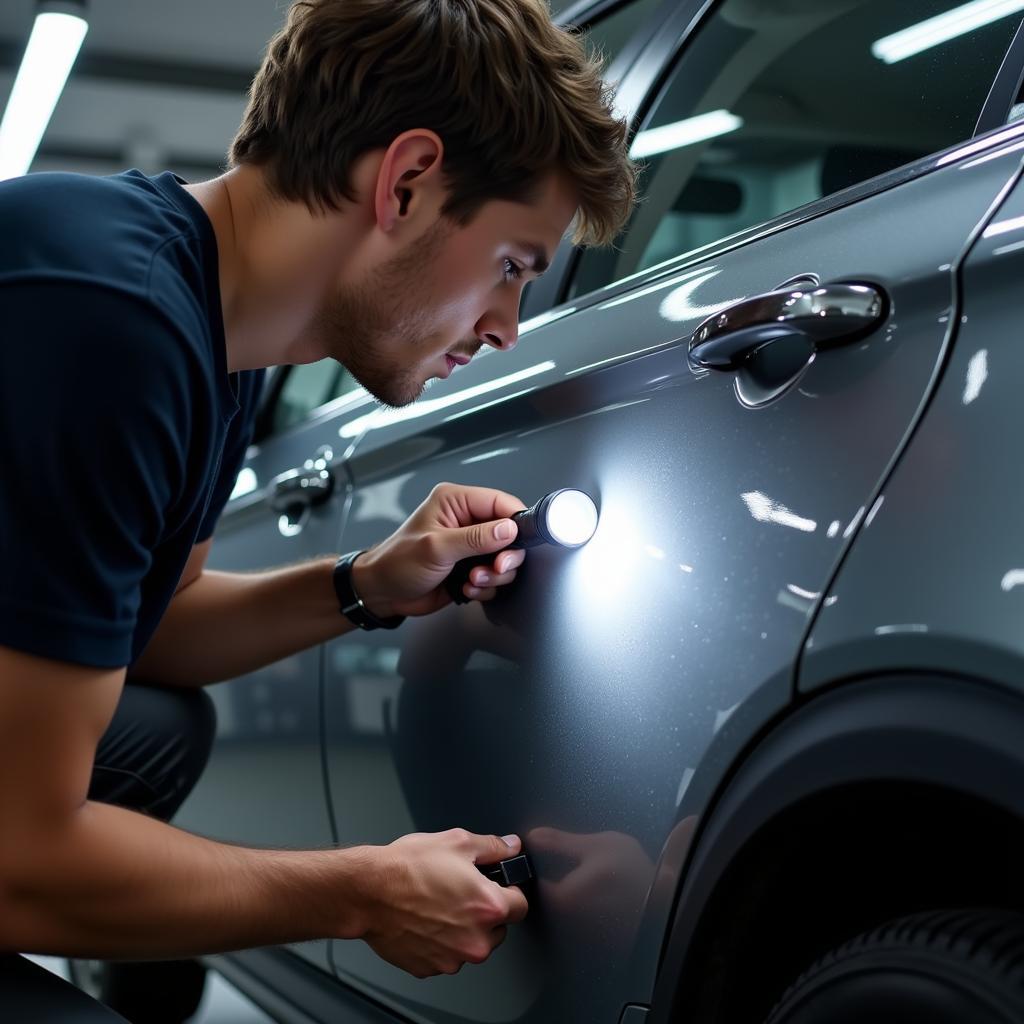
Repairing Damaged Car Seat Heater Element
Heated car seats are a luxury we often take for granted – until they stop working. A malfunctioning seat heater can make those cold winter commutes far less bearable. While seeking professional repair is always an option, understanding how to diagnose and potentially fix the problem yourself can save you time and money. This guide provides a comprehensive walkthrough on How To Repair Car Seat Heaters, empowering you to tackle the issue head-on.
Common Causes of Car Seat Heater Problems
Before diving into the repair process, it’s essential to understand the typical culprits behind car seat heater malfunctions. Identifying the root cause is the first step towards an effective fix.
- Blown Fuse: The simplest and most common issue is a blown fuse. Seat heaters draw a significant amount of current, making the fuse susceptible to blowing, especially if there’s a surge.
- Faulty Switch: The heater switch, responsible for turning the system on and off, can wear out over time, leading to a break in the circuit and a non-functional heater.
- Damaged Heating Element: The heating element itself, usually a network of wires embedded within the seat, can break or burn out due to wear and tear or excessive heat.
- Wiring Issues: Loose or damaged wiring connections within the seat or leading to the heater control module can disrupt the flow of electricity, rendering the heater inoperative.
- Heater Control Module: In modern vehicles equipped with sophisticated climate control systems, a faulty heater control module can disrupt the signals sent to the seat heaters.
Diagnosing the Problem: Where to Start
Accurately diagnosing the problem is crucial for a successful repair. Here’s a step-by-step approach:
- Check the Fuse: Locate your vehicle’s fuse box (refer to your owner’s manual) and identify the fuse associated with the heated seats. Inspect the fuse for any visible signs of damage, such as a broken wire or a blackened appearance. If in doubt, test the fuse with a multimeter for continuity.
- Inspect the Switch: With the engine off, visually inspect the heater switch for any signs of physical damage or wear. If possible, test the switch’s functionality with a multimeter to check for continuity in the on and off positions.
- Examine the Wiring: Carefully examine the wiring beneath the seat, looking for any loose connections, cuts, or signs of damage. Pay close attention to areas where wires bend or are subject to movement.
Repairing the Issue: DIY Solutions
Once you’ve pinpointed the problem, it’s time to initiate the repair process. Here’s a breakdown of common fixes:
1. Replacing a Blown Fuse
This is the easiest fix. Simply replace the blown fuse with a new one of the same amperage rating. Be sure to disconnect the negative battery terminal before replacing the fuse.
2. Replacing a Faulty Switch
If you’ve determined the switch is the culprit, replacement is straightforward. Disconnect the negative battery terminal, remove the trim panel surrounding the switch, disconnect the wiring harness, and install the new switch.
3. Repairing a Damaged Heating Element
 Repairing Damaged Car Seat Heater Element
Repairing Damaged Car Seat Heater Element
Repairing a damaged heating element can be more complex. It often involves accessing the element beneath the seat cover, identifying the break or damage, and using a specialized repair kit designed for this purpose. These kits typically involve using conductive adhesive to bridge the damaged area.
4. Addressing Wiring Problems
For loose or damaged wiring, the solution lies in securing connections or splicing in new wire sections. Use electrical tape or heat shrink tubing to insulate any exposed wires thoroughly.
Expert Insight:
“Always remember safety first when working with electrical components in your vehicle,” advises veteran automotive electrician, John Miller. “Disconnect the negative battery terminal before starting any electrical work to avoid the risk of shocks or short circuits.”
When to Seek Professional Help
While some car seat heater repairs are DIY-friendly, certain situations warrant professional intervention. If you encounter the following, it’s best to consult a qualified mechanic:
- You’re uncomfortable working with electrical systems.
- The problem persists even after basic troubleshooting.
- You suspect a faulty heater control module, which requires specialized diagnostic equipment.
- Your vehicle has a complex or integrated heating and cooling system.
Maintaining Your Car Seat Heaters
Like any other vehicle component, proper maintenance can prolong the lifespan of your car seat heaters and prevent future issues. Here are some tips:
- Avoid placing heavy objects on the seats, as this can damage the heating elements.
- Clean your car seats regularly to prevent dirt and debris from accumulating and potentially causing damage.
- Address any spills or moisture immediately to avoid potential electrical problems.
- Be mindful of the heat settings you use, and avoid prolonged use on the highest setting.
Conclusion
A malfunctioning car seat heater doesn’t have to be a major inconvenience. With some basic knowledge and troubleshooting skills, you can often diagnose and repair the problem yourself. However, always prioritize safety and seek professional assistance when needed. By understanding the common causes, diagnostic steps, and repair options, you’ll be well-equipped to keep those seats warm and your winter commutes comfortable.
FAQs
Q: How much does it cost to repair a car seat heater?
A: The cost can range widely from $5 for a replacement fuse to $500 or more for a new heating element or control module. Average cost to repair leather car seat will depend on the extent of the damage.
Q: Can I drive with a blown car seat heater fuse?
A: Yes, it is safe to drive with a blown car seat heater fuse. The fuse only affects the seat heater circuit, not any essential vehicle functions.
Q: Can I repair a car seat heater myself?
A: Some repairs, like replacing a fuse or switch, are relatively simple. Others, like fixing a heating element, can be more complex and may require professional help.
Q: How long do car seat heaters typically last?
A: Car seat heaters can last for several years, but their lifespan varies depending on usage, maintenance, and overall vehicle condition.
Q: Are aftermarket car seat heaters a good option?
A: Aftermarket seat heaters can be a more affordable alternative to OEM parts, but it’s essential to choose reputable brands and ensure compatibility with your vehicle.
Looking for Car Seat Repair Services?
Need professional assistance with your car seat heaters or other repairs? Check out our directory for reliable car seat repair shops in your area. You can find qualified technicians who specialize in Bristol car seat repairs or even electric car seat repair around Ocala, Florida. For those dealing with leather seats, you can find helpful tips on how to repair a leather car seat with heated seats.
Need Immediate Assistance?
Contact us via WhatsApp: +1(641)206-8880, Email: [email protected]. We have a dedicated team available 24/7 to help you with any car repair inquiries.




